Planting a future proof garden
No garden can be completely bullet proof, but the more adaptable and weather tolerant you can make your outdoors, the better its chance of righting itself when things go wrong. For a sustainable, hard-wearing garden that looks great all year round, a good rule of thumb is to plant at least half of it in evergreen trees, shrubs and ground covers.
Right plant, right place
Whether you face a hot dry summer, challenging soil, wet boggy ground, a steeply sloping bank, dry shade or exposed coastal conditions, it is important to choose plants that thrive in your particular situation if you want to save time and expense.
Layers
As they mature, trees and shrubs create microclimates for smaller plants, allowing us to grow treasures that need a little more shade or shelter. Also sheltering in the layers of a richly planted garden are the birds, insects, and essential micro-organisms so important to a healthy soil and garden.
Shade and cooling
In a warming climate, trees play an increasingly critical role in keeping us cool and conserving energy. In city environments trees offset the urban ‘heat island ’ effect that results from the proliferation of roads and concrete via shade and evaporative cooling. Around homes and offices, carefully placed trees reduce the need for energy-hungry air conditioners.
Deciduous trees offer summer shade while, letting the sun through in winter. There is no prettier sun umbrella than a spreading deciduous tree. Favourites for town-sized gardens include flowering cherries and Japanese maples.
Shelter
Gardens need shelter from cold or drying winds. New Zealand native trees and shrubs are among the toughest shelter screens, coping with drought, heat and wind, once they get their roots down. Either as clipped hedges or something more informal and easy care, natives offer a wide range of attractive textures and colours.
Soil protection
A soil exposed to the elements is quickly damaged, and there is no greater protection than a cover of living plants. While you wait for plants to knit together, cover the spaces between them with organic mulch. The easiest, most sustainable ground cover plants, particularly for slopes and other parts of the garden that are difficult to access, are long living ground carpeting shrubs and clumping evergreens that don’t need regular lifting and replanting.
Flood resilience
While no amount of planting can prevent catastrophe in a major flood event, it can help. Plants and their soil-binding roots help slow the flow of water and put the brakes on excessive soil loss. Slips are most likely to occur where there is a lack of cover on sloping ground. And, while paved areas are necessary in traffic areas, too much concrete in a garden leaves the water with nowhere to go. Lawns, decks, and more permeable hard surfaces fear better during a deluge.
Water-wise planting
Choosing drought tolerant plants is a first line of defence in a drought prone garden. But we can do more as gardeners to help our plants become more self-sustaining when the weather turns hot and dry.
Train young plants to cope with less water by gradually increasing the days between watering. Watering deeply once every week or two is infinitely more sustainable than a daily sprinkle, particularly if you combine deep watering with a thick layer of mulch. Once established, trees, shrubs and deep-rooted perennials should survive with only the water that falls from the sky. Lawns, vege plants and pots need more attention. Grouping plants according to water needs saves time and resources.
Diversity
A garden with a wider variety of different plants, supports a wider variety of wildlife, from birds to insects to the tiny microbes we cannot see. Besides that all important biodiversity, it makes good pragmatic sense to avoid mass failure by not putting all the eggs in one basket, whether that’s our food plants or others. Before mass planting a large area for low maintenance and visual effect, it’s worth trialing a range of options before deciding what plants will grow best in the long term.
Planting time
Make the most of cool, rainy seasons to get trees and shrubs established without water stress. With cool air and warm, rain-soaked soil that’s easy to dig and perfect for root growth, autumn is a great time to plant. A tree or shrub planted now is well prepared for the explosion of growth next spring.
Plants for a resilient garden
Ground huggers
Easy care shrubs that grow low and sideways are some of the most valuable plants in a low maintenance garden.
- Carpodetus prostrata (putaputaweta)
- Coprosma acerosa, C. kirkii varieties, C. ‘Hawera ’ , C. ‘Poor Knights ’ and others
- Fuchsia procumbens
- Leptospermum (prostrate manuka)
- Pratia angulata (panakenake)
- Muelenbeckia axillaris (pohuehue)
- Pachysandra (Japanese spurge)
- Pimelia prostrata (pinatoro)
Shelter
As formal clipped hedges of left to grow into their natural shapes, these tough natives make excellent windbreaks.
- Coprosma virescens
- Corokia varieties
- Griselinia varieties
- Metrosideros (pohutukawa, rata)
- Myoporum (ngaio)
- Olearia varieties
- Pittosporum crassifolium (karo)
Drought tolerant
Architectural forms, bold colours and interesting textures feature strongly in some of our most drought tolerant plants.
- Agave
- Anemanthele grass
- Astelia banksii
- Cistus and Helianthemum (rock rose)
- Coprosma
- Lavender
- Lomandra (Australian tussock)
- Muehlenbeckia
- Pachystegia (Marlborough rock daisy)
- Phormium (NZ flax)
- Raphiolepis
- Rosemary
- Xeronema (Poor Knights lily)
Wet tolerant
As long as the excess water can eventually drain away, many plants prefer permanently damp soils.
- Acorus gramineus ‘Ogon'
- Carex secta
- Carpodetus (putaputaweta)
- Restio tetraphyllus (plume rush)
- Rhopalostylis sapida (nikau)
- Plagianthus (ribbonwood)
- Vitex lucens (puriri)
With flowers for bees
Shrubs with bee-friendly flowers are a bonus for these precious pollinators.
- Cordyline (cabbage tree)
- Fruit trees
- Phormium (NZ flax)
- Hebes
- Lavender
- Leptospermum (manuka)
- Pittosporum
- Rosemary
Texture and motion
Flaxes, grasses and grass-like plants that move with the wind produce stunning visual effects with their contrasting colours and textures.
Most New Zealand flaxes prefer well drained soil and are very tolerant of dry windy sites once established. Tall Phormium tenax (harakeke) is the one to plant as a windbreak or to soak up excess moisture. For best colour and healthy compact growth, plant flaxes in full sun and avoid very sheltered locations to minimise pest insects.
Ornamental grasses are tough and hardy but they vary widely in their tolerances. When grasses fail to thrive it’s usually because they are too wet, to dry, too cold or too warm. Take care to choose the right ones for your soil and climate.
For mass planting in dry areas, Poa cita, Carex testacea and Festuca species are reliable choices. Good for planting around trees, Anemanthele lessoniana tolerates both dry conditions and shade.
For wetter ground try Acorus ‘Ogon ’ or Carex secta. The latter two are also good in shade, as are the Japanese sedge, Carex ‘Evergold ’ and the tough Australian Lomandra grasses. The native Chionochloa tussocks are great for damp but well drained soil.
Cold tolerant grasses for South Island gardens include Carex species, Chionochloa rubra (red tussock) and Poa cita.
To keep established grasses looking their best, use a rake or gloved hands to strip away dead foliage. Remove the flower heads of any self-seeders you want to keep under control. Untidy tussocks and deciduous grasses can be cut back close to the ground and they ’ll come away again with renewed vigour in spring. Grasses can also be lifted and divided every few springs to keep growth fresh and vigorous.

1-Mar-2023
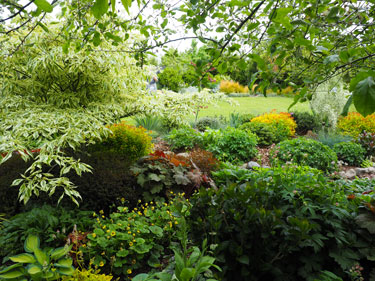
Trees create an ideal microclimate for a leafy layer of perennials in Jenny Cooper's North Canterbury garden
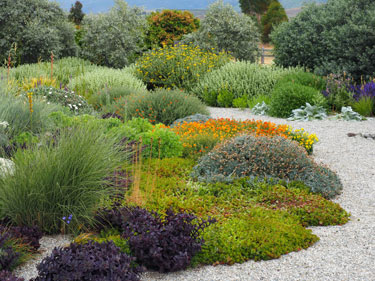
Dry loving plants in Jo Wakelin's Central Otago garden including colourful flowering Helianthemum
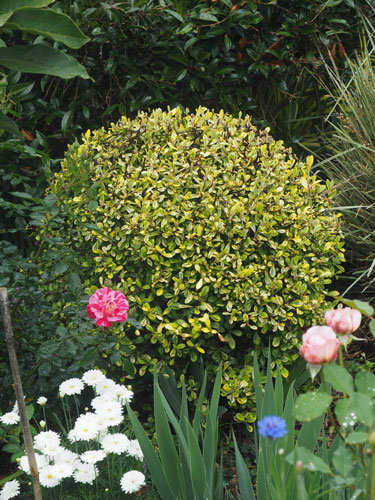
Clipped Corokia Sunsplash in Mark Boyd's Auckland garden
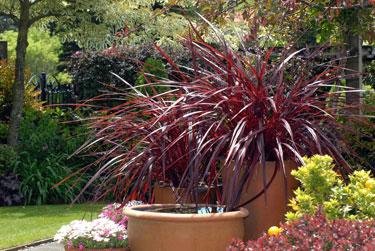
Cordyline Red Fountain is a dramatic, dry tolerant plant and a great choice for pots
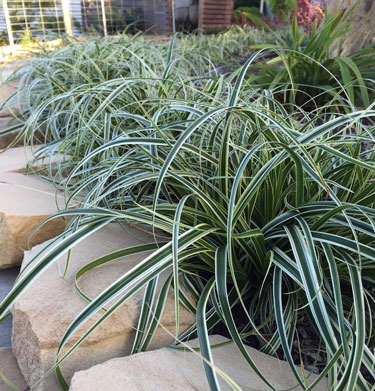
Carex Featherfalls
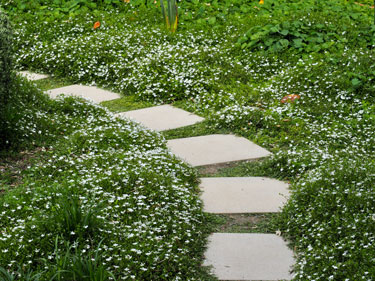
Pratia angulata
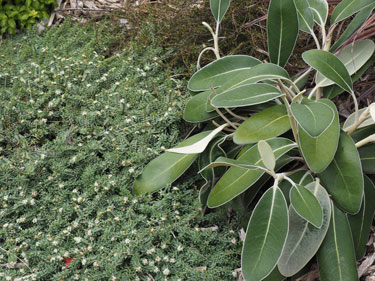
Pimelia prostrata (NZ daphne) and Pachystegia insignis (Marlborough Rock Daisy)
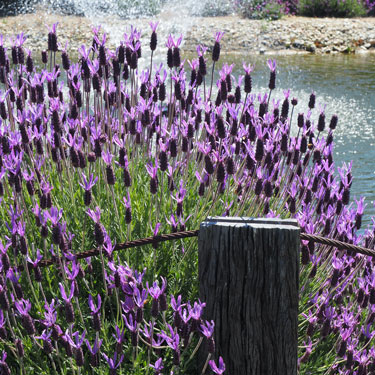
Spanish lavender
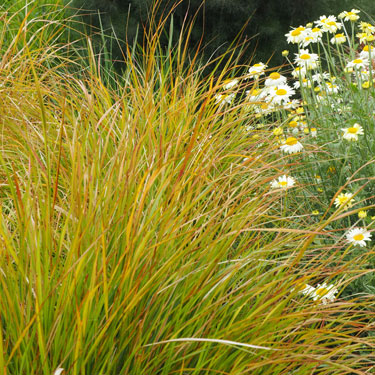
Anemanthele lessoniana (wind grass)

